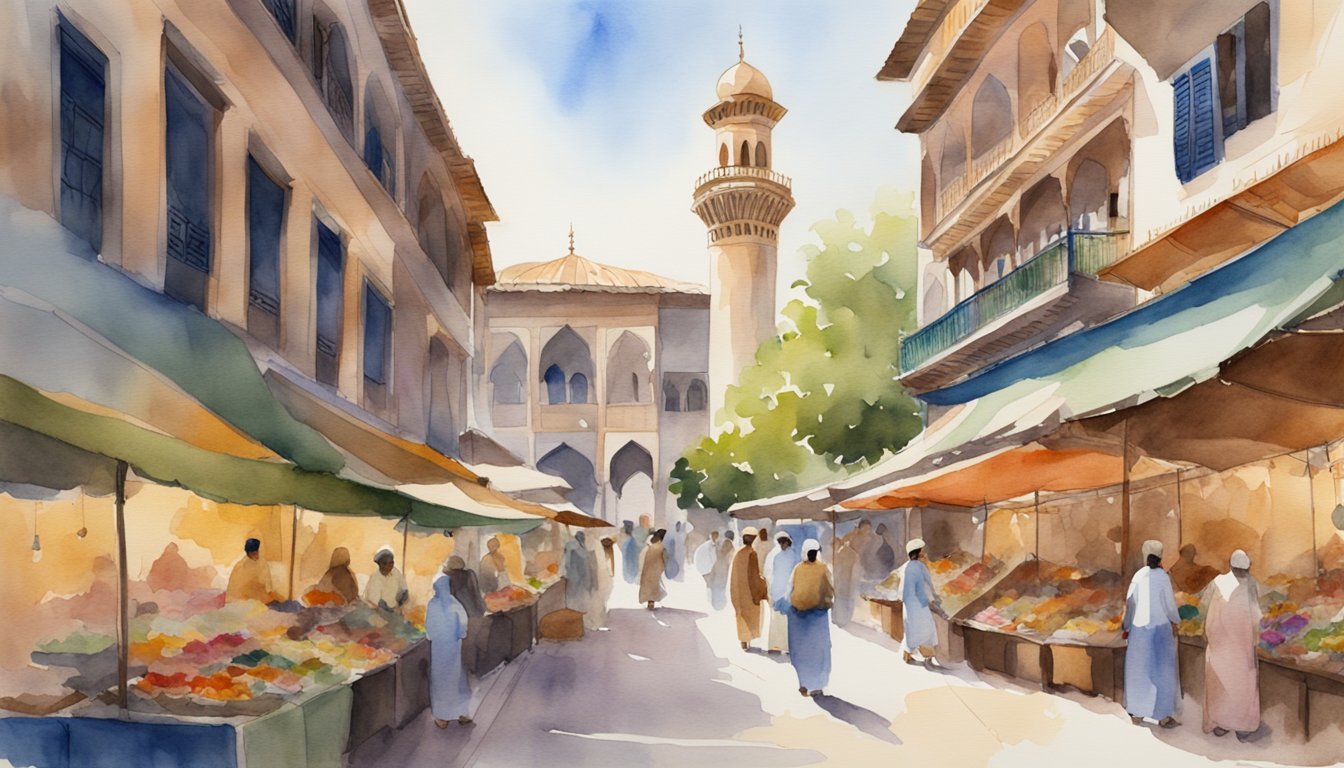Origins and Identity
The complex tapestry of the Moors’ identity is rooted in a rich blend of ethnicities and a history that spans continents. Their narrative is not only central to the understanding of medieval history but also influential in shaping modern cultural and ethnic perceptions.
Ethnic and Cultural Background
The term “Moor” is historically associated with the Muslim inhabitants of the Iberian Peninsula, primarily during the Middle Ages. These people were a melting pot of ethnicities, mainly comprising Arabs and Berbers from North Africa. While the word itself might conjure images of a homogenous group, the Moors were in fact quite diverse. They were descendants of Berbers, an indigenous North African people, and Arabs who crossed into Spain from the Maghreb. The Berbers, also known as Amazigh, had their own distinct languages and cultural practices. The Arabs, bringing with them their own customs and advancements, melded with the local populations, creating what was termed the Moorish or Andalusian culture.
Historical Homeland
The historical homeland of the Moors is often identified as the region of Maghreb, roughly corresponding to the western part of North Africa, including current-day Morocco and Algeria. Mauretania and the Maghreb were medieval term that later came to represent the Islamic kingdoms of North Africa, especially what is now Morocco and parts of Algeria. This area is significant as the springboard from which the Moors launched their crossing into the Iberian Peninsula, leading to the establishment of Al-Andalus, an advanced civilization on European soil that endured for several centuries. Their presence in the Iberian Peninsula left a lasting impact on the culture, architecture, and even the genetic make-up of the region, with many people in modern Spain and Portugal tracing their ancestry back to these historical figures of African descent.
Cultural and Historical Influence

The Moors have left an indelible mark on the cultural and historical landscape of Europe, especially in the realms of art, science, and societal interactions.
Contributions to Arts and Science
The Moors were instrumental in the introduction of new scientific techniques to Europe, particularly in the fields of astronomy, mathematics, and medicine. They were adept at translating and enhancing the scientific knowledge from classical texts of the Greeks and Romans, and they pioneered advancements in algebra and trigonometry. In al-Andalus, Muslim and Jewish scholars worked together, leading to the flourishing of learning and translation movements. Many words, especially those related to science such as ‘algebra’, filtered into European languages from Arabic through the Moorish influence.
In addition to their scientific contributions, the Moors were also skilled artists and architects. The elaborate and intricate designs of Moorish architecture, characterized by ornate arches, domes, and mosaics, are still visible in various landmarks, notably the Alhambra in Granada. Their influence on art can be observed in the Mudéjar style, which reflects Islamic artistic trends incorporated into Christian buildings.
Interactions with Other Societies
Throughout the Middle Ages, the Iberian Peninsula was a melting pot of cultures due to the Moorish presence from the early 8th century until the Reconquista, culminating in the fall of Granada in 1492. The Moorish rule in Spain is typically seen as a period of relative tolerance among Muslims, Christians, and Jews, facilitating an exchange of ideas and cultural practices.
The Moors interacted continuously with European societies, significantly impacting the Spanish language with the introduction of thousands of Arabic words. This interaction wasn’t without conflict; the rise and fall of dynasties like the Almoravid and Almohad empires often involved hostilities with various Christian kingdoms in Europe. Nevertheless, it was this centuries-long Muslim presence in the Iberian Peninsula that helped bridge the gap between the intellectual achievements of the Islamic world and the emerging learning of Christian Europe, paving the way for the Renaissance.

